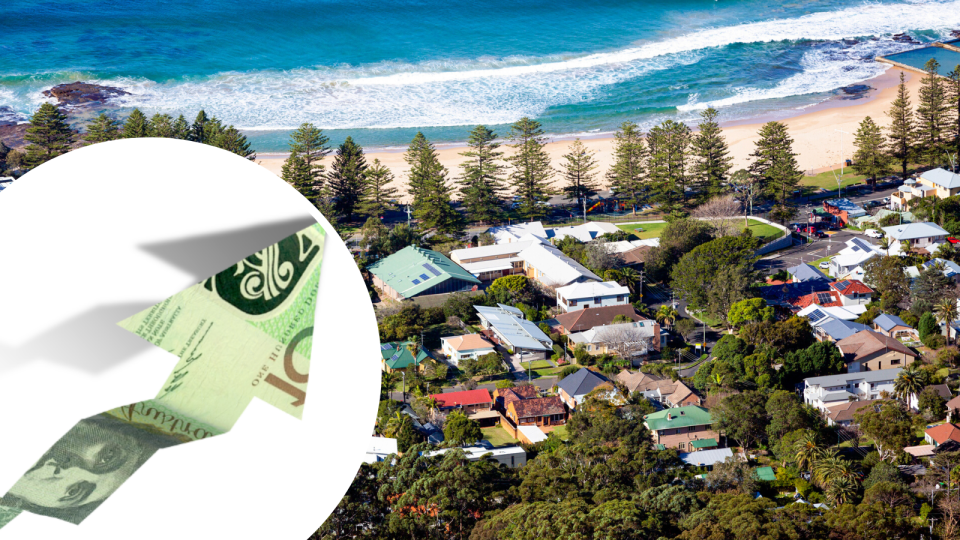Can Australian house prices really keep rising?

Some people are wondering if property values can keep rising.
They read that property values are unaffordable to many considering most of our capital cities have reached new price peaks and our 2 big capitals, Melbourne and Sydney, will attain new highs in the next few months.
Let me tell you, I’m not concerned.
I know the value of well-located properties in our major capital cities will keep growing because the old supply and demand ratio will keep pushing up property prices – but not everywhere around Australia.
You see…on the demand side, Australia’s population will keep growing, adding around 400,000 people annually.
This means each year around 170,000 new households will be looking to either buy or to rent accommodation.
More from Michael Yardney: 10 mistakes to avoid on your first property investment
More from Michael Yardney: The best investment property for 2020
More from Michael Yardney: What we can expect from Australia's property market over the next decade
On the supply side, the recent apartment building boom is over. We’ve reached peak supply and with a significant reduction in new building approvals, residential construction activity is set to fall further which will most likely lead to a housing shortage and rising property values.
Historically, as prices rise and interest rates fall, developers get set for the next property cycle, building approvals rise and eventually construction picks up, but typically with a lag. And there’s a particularly long lead time for higher density developments.
This time around the response in building approvals has been relatively muted.
I feel developers are concerned about the viability of pre-sales given all the negative publicity about building standards.
However, in the background our government will keep encouraging skilled migrants to come to our shores to replace our retiring Baby Boomers in the workforce.
Currently immigration accounts for over half our population growth and it is mainly coming from South East Asia, as you can see from the following chart prepared by property analyst Michael Matusik, over 80 per cent of this population growth over the last decade was concentrated in Melbourne, Sydney and Brisbane.
And I believe this trend will continue as despite government attempts to increase population growth in our regional centres, young people will leave regional Australia to move to the big smoke and migrants will only stay there for the length required by their Visa before they move to the capital cities.
What’s ahead for Australian property:
1. We’ll have the requirement to build around 170,000 new dwellings each year, but we’re currently falling short of this target, meaning there will be a shortfall of well-located desirable accommodation.
2. More multi-generational households
At present 18% of Australia’s households house two generations and 9% house three generations.
These figures are likely to rise over the next decade, partly because of our changing demographics and partly because of affordability issues.
Yet very little of Australia’s existing housing stock successfully caters to this multi-generational market.
3. More congestion on our roads.
Our love affair with cars will continue. According to the Australian Bureau of Statistics, half of all households have access to two or more cars.
While it has been shown overseas that cities can be livable despite having very large populations of many millions, the infrastructure, and in particular public transport, needs to be able to accommodate the population.
Unfortunately, Australia's infrastructure growth has not kept pace with our rising population, meaning roads will become more clogged and accommodation in proximity to public transport will become more sought after and relatively more valuable.
4. Property prices will continue to increase...just as they have since Federation.
But some areas will increase in value more than others.
Moving forward, the relatively poorer families will live further out than ever because the rich do not like commuting and will continue to live in our leafy more established suburbs close to amenities and public transport.
This means property values in the inner and middle ring suburbs in our 3 big capital cities, where the locals will be relatively wealthier and have more disposal income, will increase proportionally more than the outer suburbs.
Michael Yardney is a director of Metropole Property Strategists, which creates wealth for its clients through independent, unbiased property advice and advocacy. He is a best-selling author, one of Australia's leading experts in wealth creation through property and writes the Property Update blog.
Make your money work with Yahoo Finance’s daily newsletter. Sign up here and stay on top of the latest money, news and tech news.
Follow Yahoo Finance Australia on Facebook, Twitter, Instagram and LinkedIn.

 Yahoo Finance
Yahoo Finance 
